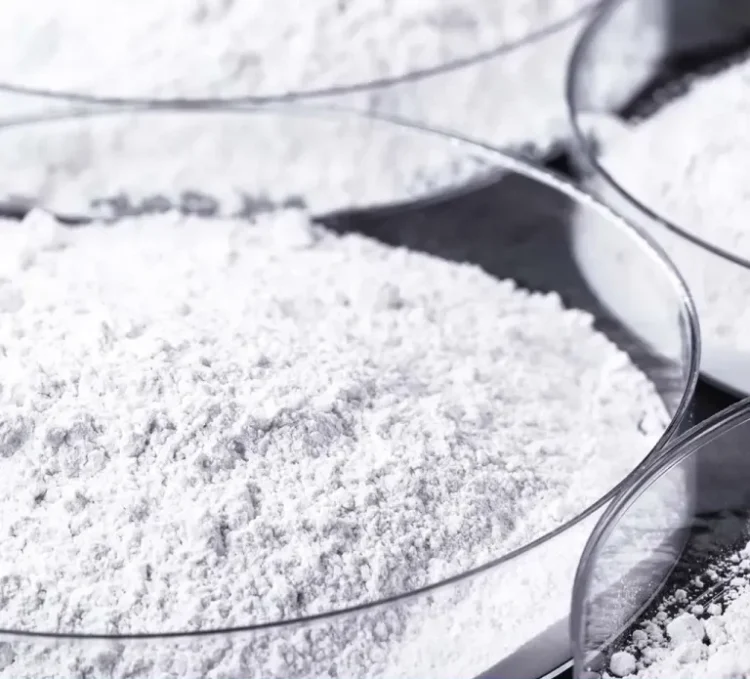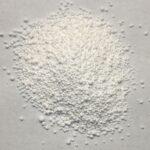🏭 Use of Calcium Carbonate (CaCO₃) in Industry
Calcium Carbonate (CaCO₃) ranks among the most widely used minerals globally. You will find it in construction, agriculture, paper, pharmaceuticals, plastics, and more. Thanks to its chemical stability, affordability, and abundance, industries rely on it heavily for both large-scale and specialized manufacturing.
In this post, we will thoroughly explore Calcium Carbonate’s nature, production methods, types, and diverse industrial applications.
🧪 What is Calcium Carbonate?
Calcium Carbonate (CaCO₃) is an inorganic compound made of calcium, carbon, and oxygen. It occurs naturally in minerals such as limestone, chalk, and marble. Biological materials like seashells and coral also contain this compound. Typically, it appears as a white, odorless powder or crystalline solid.
Because CaCO₃ neutralizes acidic environments effectively, industries widely use it in chemical reactions and soil improvement. For instance, when CaCO₃ reacts with acids, it releases carbon dioxide, which plays a vital role in many industrial processes.
Calcium Carbonate exists in three crystal forms:
-
Calcite – The most stable and common industrial form
-
Aragonite – Less stable, mostly found in marine organisms
-
Vaterite – The least stable and rare
Industries mainly use two forms:
-
Ground Calcium Carbonate (GCC) – Made by mechanically grinding natural limestone
-
Precipitated Calcium Carbonate (PCC) – Produced chemically, offering high purity and consistent particle size
Because of its neutral pH, moderate hardness, and chemical compatibility, CaCO₃ performs exceptionally well in coatings, plastics, pharmaceuticals, and other products.
🏭 Production of Calcium Carbonate
Industries produce Calcium Carbonate mainly through mechanical and chemical methods. Let’s examine each process carefully.
⛏️ Ground Calcium Carbonate (GCC)
Manufacturers create GCC by crushing and grinding mined limestone. The process includes several key steps:
-
Crushing – Workers break large limestone rocks into smaller pieces.
-
Grinding – These pieces pass through industrial mills to create fine powder.
-
Classifying – Cyclones separate particles by size.
-
Surface Coating – For plastic applications, producers often add coatings like stearic acid.
-
Packaging – The powder is bagged or stored for shipment.
Since the process retains the natural crystal structure, GCC finds wide use in paints, rubber, asphalt, and construction materials.
⚗️ Precipitated Calcium Carbonate (PCC)
PCC forms through a controlled chemical reaction, which enhances purity and particle consistency:
-
Calcination – Heating limestone releases carbon dioxide and produces quicklime (CaO).
-
Hydration – Adding water converts CaO into slaked lime (Ca(OH)₂).
-
Carbonation – Bubbling CO₂ through slaked lime precipitates CaCO₃.
-
Filtration & Drying – The solid material is filtered, dried, and classified.
-
Modification – Producers tailor particle size and shape to meet application requirements.
PCC’s high purity makes it ideal for pharmaceuticals, paper coatings, and specialty polymers.
⚙️ GCC vs PCC: A Quick Comparison
| Feature | Ground CaCO₃ (GCC) | Precipitated CaCO₃ (PCC) |
|---|---|---|
| Origin | Mined from limestone | Created via chemical process |
| Particle Control | Natural, limited | Engineered, highly precise |
| Purity | Moderate to high | Very high |
| Cost | Lower | Higher |
| Common Applications | Paint, plastic, cement | Pharma, paper, food |
🏭 Industrial Uses and Applications of Calcium Carbonate
Because of its versatility, many industries employ Calcium Carbonate in different ways. Below are some key applications:
🧱 Construction and Building Materials
In construction, CaCO₃ serves as a fundamental ingredient in cement, lime, and mortar. Moreover, it strengthens concrete and works as a filler in asphalt, sealants, and roofing materials.
📜 Paper and Pulp Industry
Paper manufacturers use Calcium Carbonate as a filler and coating agent. This improves brightness, opacity, and print quality. Additionally, CaCO₃’s lower abrasiveness prolongs machinery life.
🎨 Paints and Surface Coatings
Paint producers add CaCO₃ to adjust viscosity, increase opacity, and enhance durability. Due to its neutral pH and low oil absorption, it blends well with other paint components.
🧴 Plastics and Polymers
Plastic manufacturers incorporate CaCO₃ to replace part of the resin, reducing costs. Simultaneously, it increases rigidity and improves surface finish.
💊 Pharmaceuticals and Healthcare
In the pharmaceutical sector, Calcium Carbonate acts as a calcium supplement and antacid. Additionally, it serves as a filler in tablets and topical creams.
🌾 Agriculture and Soil Conditioning
Farmers apply agricultural lime (CaCO₃) to neutralize acidic soils. This action improves nutrient availability and supports better crop yields.
💧 Water and Wastewater Treatment
Water treatment plants use Calcium Carbonate to neutralize acidity and remove impurities. Consequently, it maintains pH balance and protects pipelines from corrosion.
✅ Advantages of Using Calcium Carbonate
Calcium Carbonate offers many benefits for industrial applications:
-
It is naturally abundant and available worldwide.
-
It reduces manufacturing costs significantly.
-
It remains chemically inert, making it safe for food and medicine.
-
It improves product quality in paints, paper, and plastics.
-
It helps reduce environmental impact through emission controls and water treatment.
Its adaptability, affordability, and safety make it an essential material.
❓ FAQs about Use of Calcium Carbonate (CaCO₃)
🔍 What is Calcium Carbonate used for in industry?
Calcium Carbonate is used in construction, plastics, paper, pharmaceuticals, agriculture, and more. It acts as a filler, pH adjuster, strengthener, and neutralizing agent.
🔍 Is there a difference between GCC and PCC?
Yes. GCC is mechanically ground from limestone, while PCC is chemically produced. PCC offers higher purity and better control over particle shape and size.
🔍 Can Calcium Carbonate be used in food and medicine?
Absolutely. It meets global safety standards and serves as a calcium supplement, antacid, and tablet filler.
🔍 How does CaCO₃ benefit soil?
It raises soil pH, neutralizes acidity, and adds calcium, improving conditions for plant growth.
🔍 Does it help in water purification?
Yes. It removes acidity and certain metal ions from water, making it safer for human use and industrial processes.
🧾 Conclusion- Use of Calcium Carbonate (CaCO₃)
Calcium Carbonate (CaCO₃) plays a vital role in many industries worldwide. It supports construction, paper production, pharmaceuticals, agriculture, and water treatment. Due to its cost-effectiveness, safety, and performance benefits, it remains a preferred material for manufacturers. By choosing CaCO₃, businesses improve product quality and sustainability, making it an essential mineral for industrial progress.
📞 Call to Pars Universal Bitumen
Are you sourcing premium Calcium Carbonate for industrial or commercial use?
🏭 We in PARS Universal Bitumen, provide both GCC and PCC types tailored to your specific needs.
👉 Get in touch today to request samples, prices, or technical specifications! 📞
📧 Email: [email protected]
📞 Phone: +971 4 878 2031
🌐 Visit: Pub-ltd
🛒 Order Calcium Carbonate Today. If You have any other Query or Question you want to ask, Please don’t hesitate to Contact Us.



